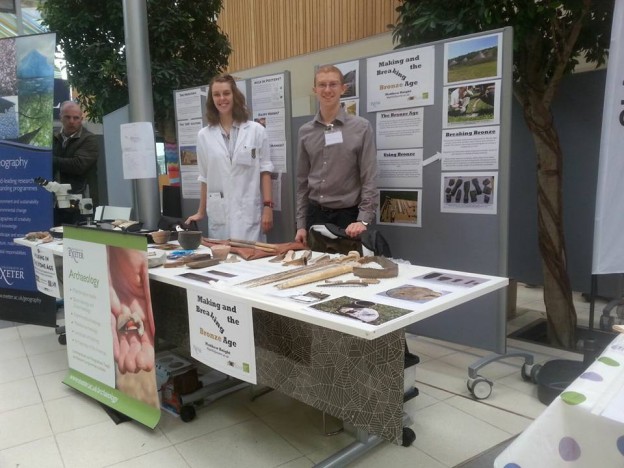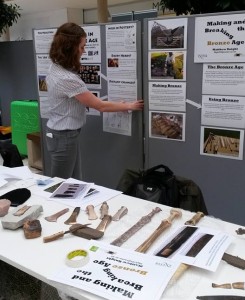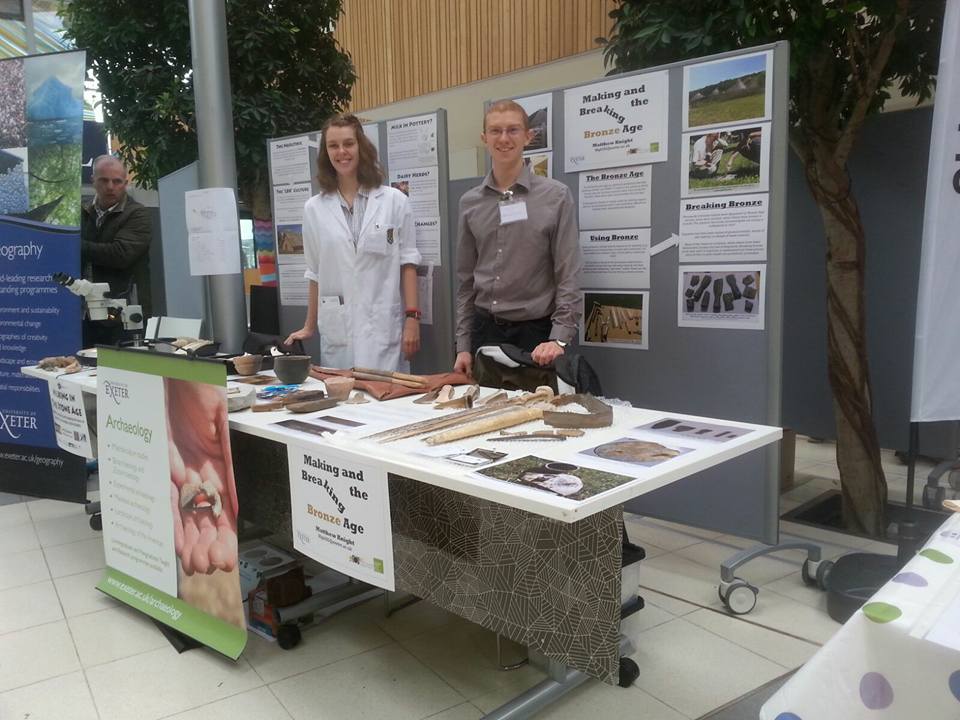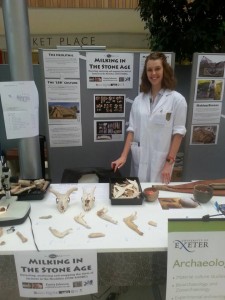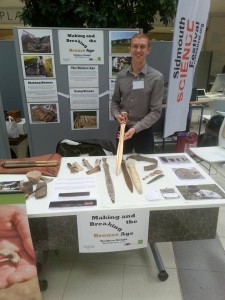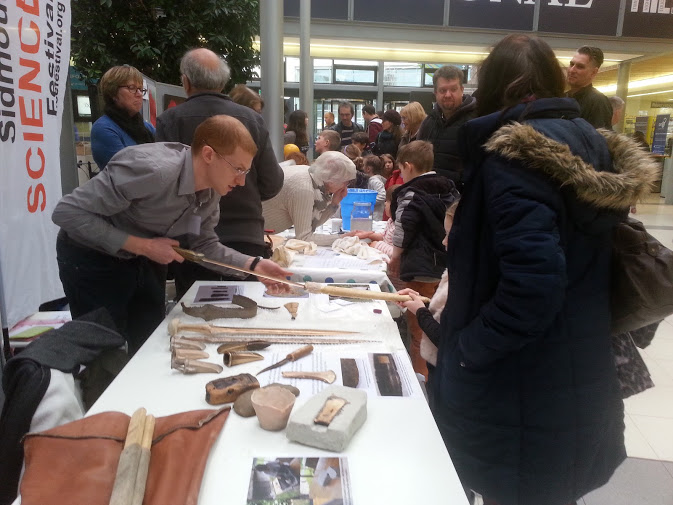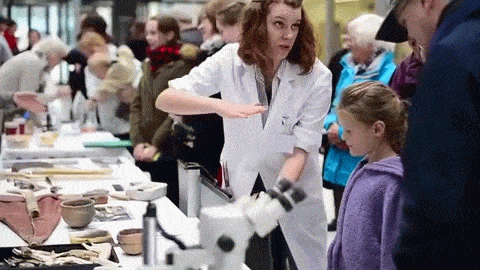On Sunday 20th March, the University of Exeter hosted its first ever Community Day – a day designed to showcase the ongoing research at the university, while also providing a host of fun activities to engage the family (I’m sorry to say I missed out on the Bouncy Castle!). Emily Johnson and I volunteered to represent the Department of Archaeology at the event, presenting not only our own research, but also elements of what the department had to offer. We arrived early to set up on the day (so early in fact that no one was around to accommodate us!), and were surprised to find ourselves in a prime location on Forum Street in competition with geography on one side and science on the other. Needless to say, friendly rivalries over attracting visitors ensued!
Milking in the Stone Age
Emily’s stall, dedicated to her research on the milking revolution in Neolithic Europe, was quickly adorned with sheep jaws, replica Neolithic pots (filled with sweets for the kids!), and a microscope for analysing taphonomic modifications to bones. Throughout the day she demonstrated how archaeologists use animal teeth to say what age animals were when they died and explained how this data is used to reconstruct herd structures, whilst simultaneously assisting the use of the microscope. Here, children and adults alike looked at butchery marks, burning, dog gnawing, and other taphonomic factors than can affect the surface of bone. These marks can indicate how people were processing their animal carcasses in the past – whether they were fully utilising all nutritional items or just going for the prime cuts. The way that people butchered and deposited their livestock may well have changed with the inclusion of regular dairy fat in the diet. People really enjoyed handling the bones, despite some initial disappointment that they didn’t belong to dinosaurs!
Making and Breaking the Bronze Age
My stall, meanwhile, presented elements of the production, use and destruction of Bronze Age Britain, which meant my table was weighed down under numerous replicas including stone moulds and bronze axes, knives and swords (yes I did my risk assessments!) Over the course of the day I elaborated on the process by which bronze was produced and the components that go in to casting and working an object. The children seemed to particularly enjoy guessing what various objects might be – especially the axes, which are quite unusual when not hafted! Naturally the highlight for many of the visitors to my stall was the chance to study a Bronze Age sword up close. I presented swords in various conditions (as-cast, handled and broken), alongside pictures of how they’re found in the archaeological record, which really helped emphasise to the visitors how these objects could easily have been symbols of power in the Bronze Age.
Overall, the Spring Community Day was an unparalleled opportunity to engage the public with what’s going on in the Archaeology department and share our knowledge with those interested, while also being forced to think about how best to communicate to non-academics some of the more complex issues that surrounds our field. A really fantastic experience.
Were you at Community Day? Did you spot yourselves in the pictures or videos of the event? If you have any comments or questions about our stalls, please get in touch! Email evj202@exeter.ac.uk.
Written by Matt Knight

